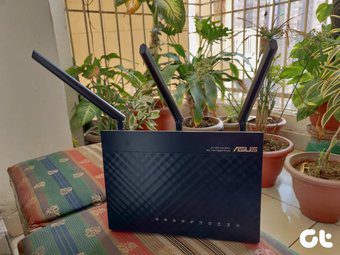Common Features of Stick Computers
Stick computers are designed to be an extra computer for most people. They have mobile device processors like phones rather than laptop or desktop processors. They plug directly into an HDMI port on the back of a TV or monitor. These computers usually have a few USB ports along with Bluetooth and micro-SD card slot. For networking, they’ll have built-in wireless but no Ethernet port. Most of them look like a large USB flash drive, but contain a full computer with an operating system. Depending on the brand, they’ll come with Windows, Android or Chrome OS. The onboard storage is usually around 32 GB flash memory. That’s enough to run an operating system, but not to store much else. That’s where the micro-SD card slot comes in.
What Can These Systems Do?
They can do most things their laptop or tablet counterparts can do. The devices running Android tend to have similar computing power as their tablet or phone equivalents. The Windows stick computers perform basic computing functions. Typical computing tasks like web browsing, watching online videos and checking email work great on a stick computer. Even office suites work fine, so long as the files aren’t too large or graphics intense. When I set these up, I always install TeamViewer so you can remote into the computer. That way if the TV isn’t on the right input, I can still access the computer.
What Are Their Limitations?
These systems limit themselves with space and speed. The small storage space prevents you from keeping too many files on the primary drive. Depending on your operating system, 10-30% of the drive is already used when you get the computer out of the box. The micro-sd card lets you expand the space. Those sd-cards are expensive. I also have a tendency to lose them. The mobile processor means you can’t perform heavy calculations. For example, encoding video files takes forever. If your HDMI monitor is large, part of the processor’s power is used to render the video screen. Don’t expect much more power than a mobile phone here. If you’re using an Android-based stick computer, it will seem faster because developers optimize the programs for less powerful systems. In my tests of the Kangaroo system, the system was unacceptably slow with most gameplay. Other tasks, like running a Plex server were completely acceptable. Quickbooks ran fine on my Kangaroo.
Cool and Unique Features of the Kangaroo
When I was looking for a stick computer to try out, I decided on the Kangaroo for a few reasons. First, it works on battery power. I got around 2-3 hours off of it. You can’t use it as a laptop since it doesn’t have a screen or keyboard attached. Or can you? The killer feature for me was the Kangaroo’s iPad app. If you have an iPad with a Lightning connector, a companion app for Windows let you use your iPad as a screen and keyboard. The program installs drivers in Windows and then lets your iPad remote in. The program isn’t that much different than TeamViewer or other remote control programs. The difference with the Kangaroo’s app is it works with no latency on the Lightning cable. InFocus support told me it would work over an older 30-Pin connector, but it doesn’t. It only works with an iPad over Lightning. This includes the iPad Mini. It doesn’t work on an iPhone. Currently, I use it over TeamViewer since my iPad is a little older. I keep it around when I need to run a PC program like Quickbooks. It also works great as a NAS to keep some media on the road.
Drawbacks of the Kangaroo
Because this acts more like a laptop than a stick computer, you need to use a power charger and HDMI cable to plug it into a TV or monitor. Other stick computers plug directly into an HDMI port and don’t need a cable. They get their power from a micro-USB connector. Since many TVs or monitors have a USB port, most users won’t need another adapter. The Kangaroo’s HDMI cable requirement isn’t a limit for me. I like it. This gives me more flexibility in placement. I also use an HDMI to DVI cable on an older monitor. I could use an HDMI to DVI adapter and then use a DVI cable with other stick computers. That configuration seems really complex. The Kangaroo gives me more flexibility.
Overall Review: Very Cool Computing
These systems retail for around $100 in the US. That’s more than a Chromecast, but less than an Apple TV or most other computers. If you need a simple computer in the bedroom or for the kids, stick computers are perfect. I like the Kangaroo because of the battery, flexibility, and remote capabilities. The above article may contain affiliate links which help support Guiding Tech. However, it does not affect our editorial integrity. The content remains unbiased and authentic.















